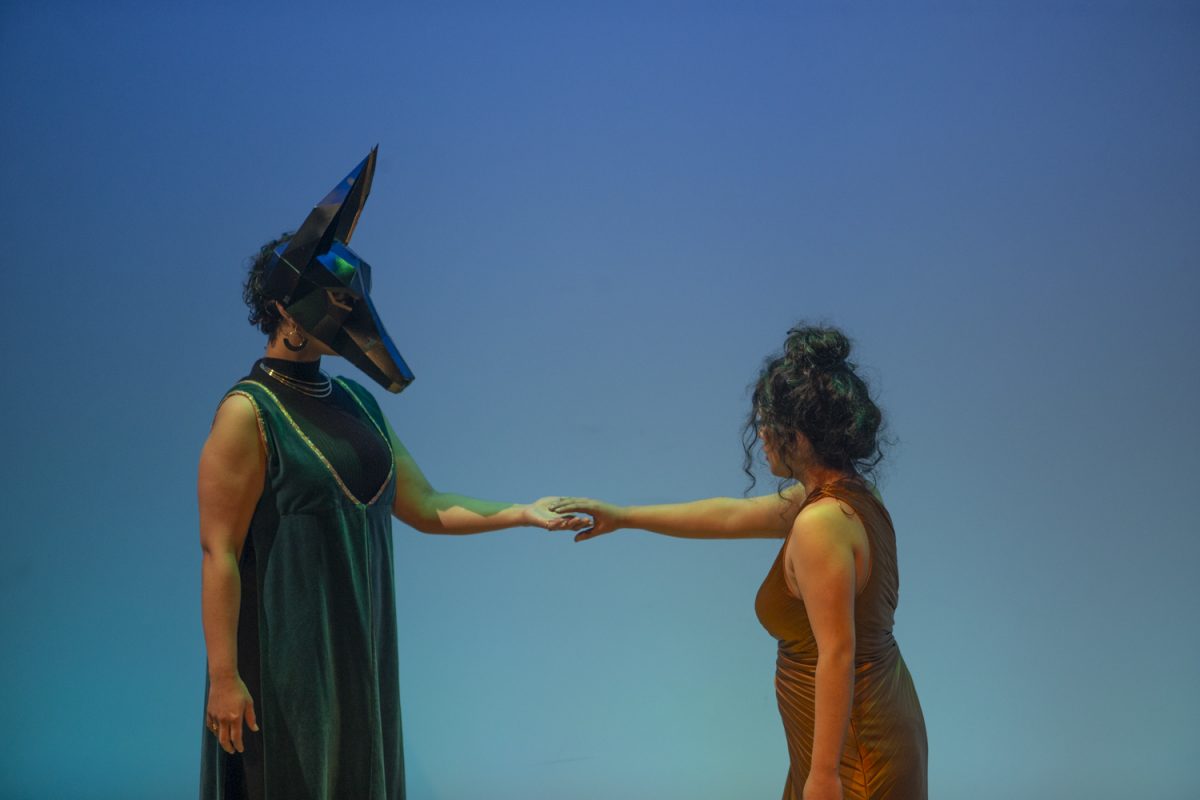The GameCube was the first Nintendo home system to release without a Mario game, instead launching with a strange game called Luigi’s Mansion. Rather than the revolutionary new Mario experience we were hoping for, we got a quirky little adventure game starring Mario’s oft overlooked little brother Luigi. Luigi’s romp through this “scary” mansion was unique, quirky, and just plain funny.
It was an enjoyable game and a nice surprise, one that I thought would never get a sequel. But now, almost 12 years later, we have Luigi’s Mansion: Dark Moon, a game that builds on its predecessor’s ideas but comes equipped with so many of its own that it feels more like a re-imagining rather than just a sequel.
Following in the steps of most other Mario/Luigi games, Dark Moon has very little story. The opening cut scene shows a mysterious figure destroying the Dark Moon, an airborne gem that keeps all of the ghosts of Evershade Valley happy and docile. As the pieces of the Dark Moon fall to Earth, we see Professor E. Gadd, the famed paranormal researcher from the original game get chased out of his office by wild ghosts. This leads him to summon an unwilling Luigi to Evershade Valley and force him to take up ghost hunting once again to restore the valley to its peaceful state.
This story is no better or worse than what I would expect from Luigi’s Mansion, but it gets style points for its funny writing, as well as Luigi’s constant reluctance to take part in E. Gadd’s schemes.
You can see his discomfort in every cut scene, often shaking and shivering at the very thought of ghosts just before being teleported to the next mission location.
While exploring mansions is still the focus, the moment to moment gameplay has been improved and expanded in almost every way.
The first Luigi’s Mansion was a series of fights: enter a room, defeat all the ghosts, and get a key to the next room. There were rudimentary puzzles every once in a while, but 90 percent of your time was spent hunting ghosts. Dark Moon reminded me more of a Zelda game or a point and click adventure. Almost every room is a puzzle that needs solved, usually through interacting with the environment in interesting ways. For example, in one area, you grab a wad of spider web and use it as a torch to light a nearby fuse. In another, you use your vacuum to tug on a mammoth’s trunk, causing him to fling you through the ceiling. Puzzles are reused often, but the varied mansion design will likely distract you from the repetition.
Fighting ghosts is still an integral part of the play, and the combat system has been deepened since the previous game. Ghosts must be stunned by a flashlight before they can be vacuumed, and this time around, you can charge up your flashlight to create a bigger flash and stun numerous ghosts at once. Capturing numerous ghosts at once, as well as catching them quickly, gets you more gold. Gold earns you upgrades to your vacuum and flashlight that make combat easier.
These minor tweaks add new levels of strategy that couldn’t have existed in the first game. The controls are a little awkward at times, especially using the face buttons to look up and down, but they are minor annoyances at most.
The final major addition is the Dark Light device, which allows Luigi to reveal hidden objects. This is mostly used to expose chests and doors to get secret items, but also has some more interesting implementations, like tracking the invisible footsteps of a ghost dog.
The game comprises five different mansions, each containing a series of missions tied to it. Each mission requires you to complete a specific goal within the giant mansion, but you are usually given free rein if you just want to explore. Once a mission objective is completed, you are immediately teleported out of the mansion, putting an end to that exploration session. This is the game’s most glaring flaw, and it should have given you the option to stay, especially since there are plenty of reasons to want to stick around.
Completionists will have their work cut out for them if they want to find and see everything this game has to offer. There is even a four-player multiplayer mode (delightfully named the “ScareScraper”) if you want to go on some ghost busting adventures with your friends.
The 3D effect is legitimately impressive, complimented by long hallways and detailed backgrounds. Characters look great, but it’s the mansion designs that deserve special mention. Every room is so beautifully crafted I didn’t mind spending a few minutes poking around each one. The reused music from the first game is still good, and Luigi still hums along with it while creeping through mansions, which is a fun little detail.
Luigi’s Mansion Dark Moon is the best kind of sequel. It doesn’t just copy paste the formula of its source material — it expands on it, changes it, and creates its own identity. Despite all the similarities, both Luigi’s Mansion games are very different and are great games for different reasons, but Dark Moon’s smart additions make it the best game starring Luigi money can buy.
Reviewer Score: 9/10
Luigi’s Mansion: Dark Moon
Developed by Next Level Games






